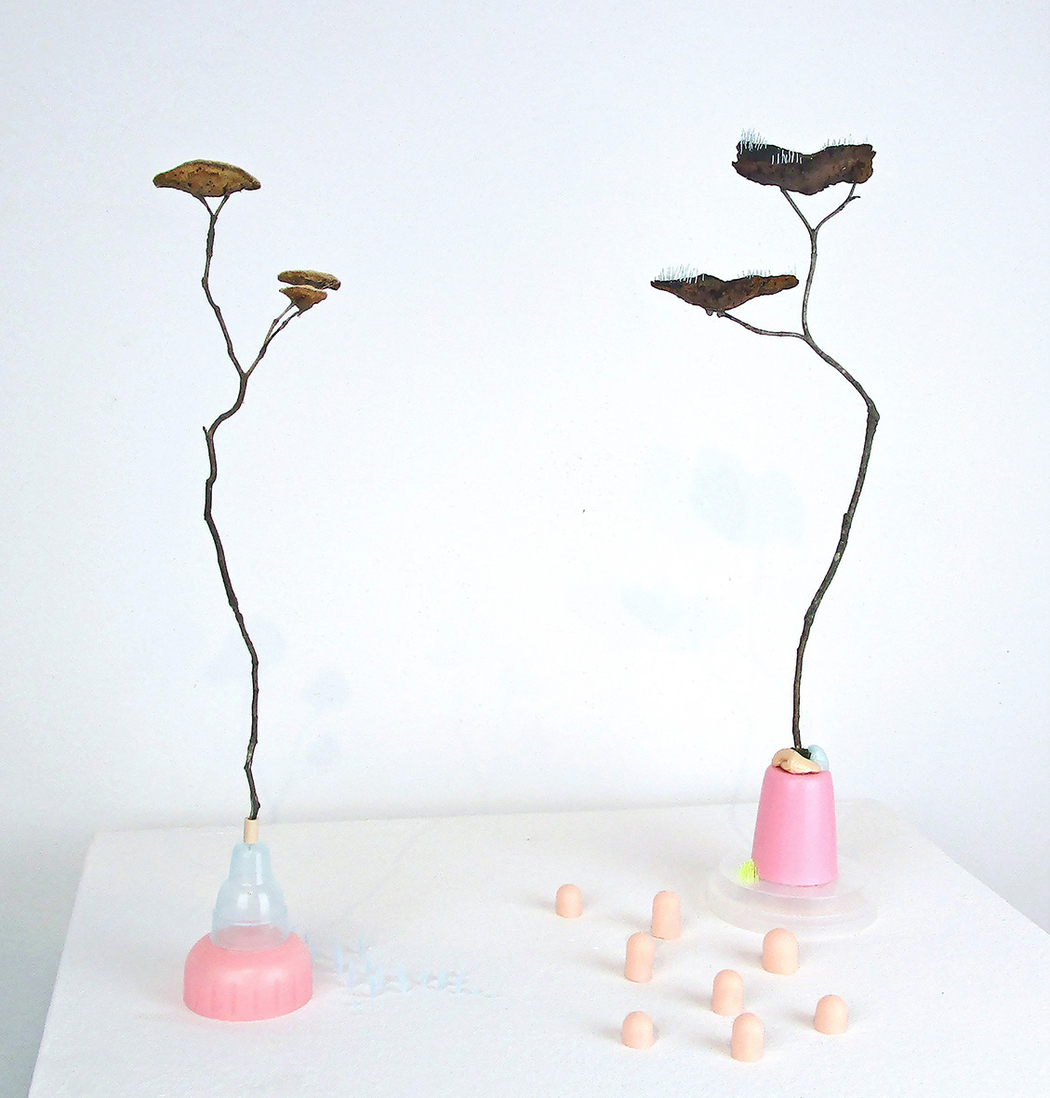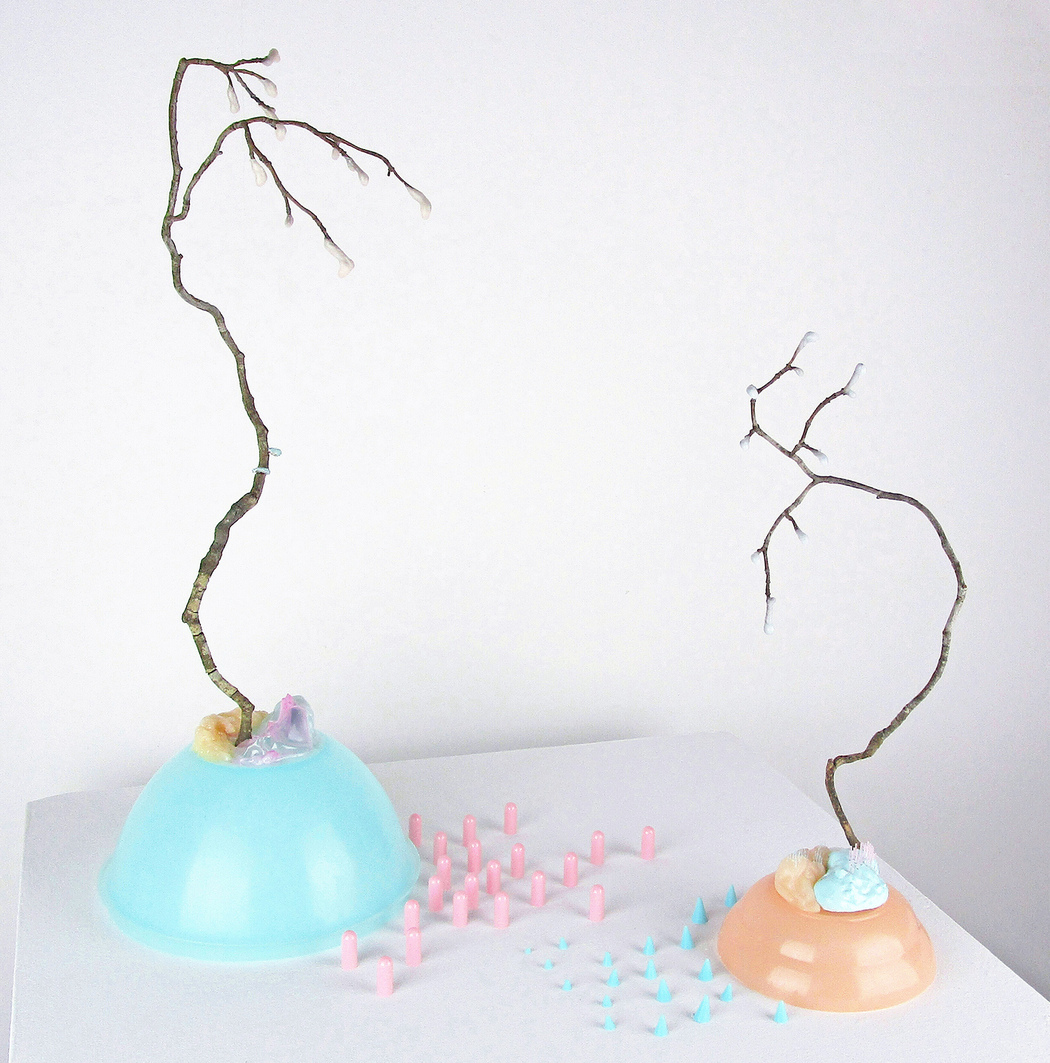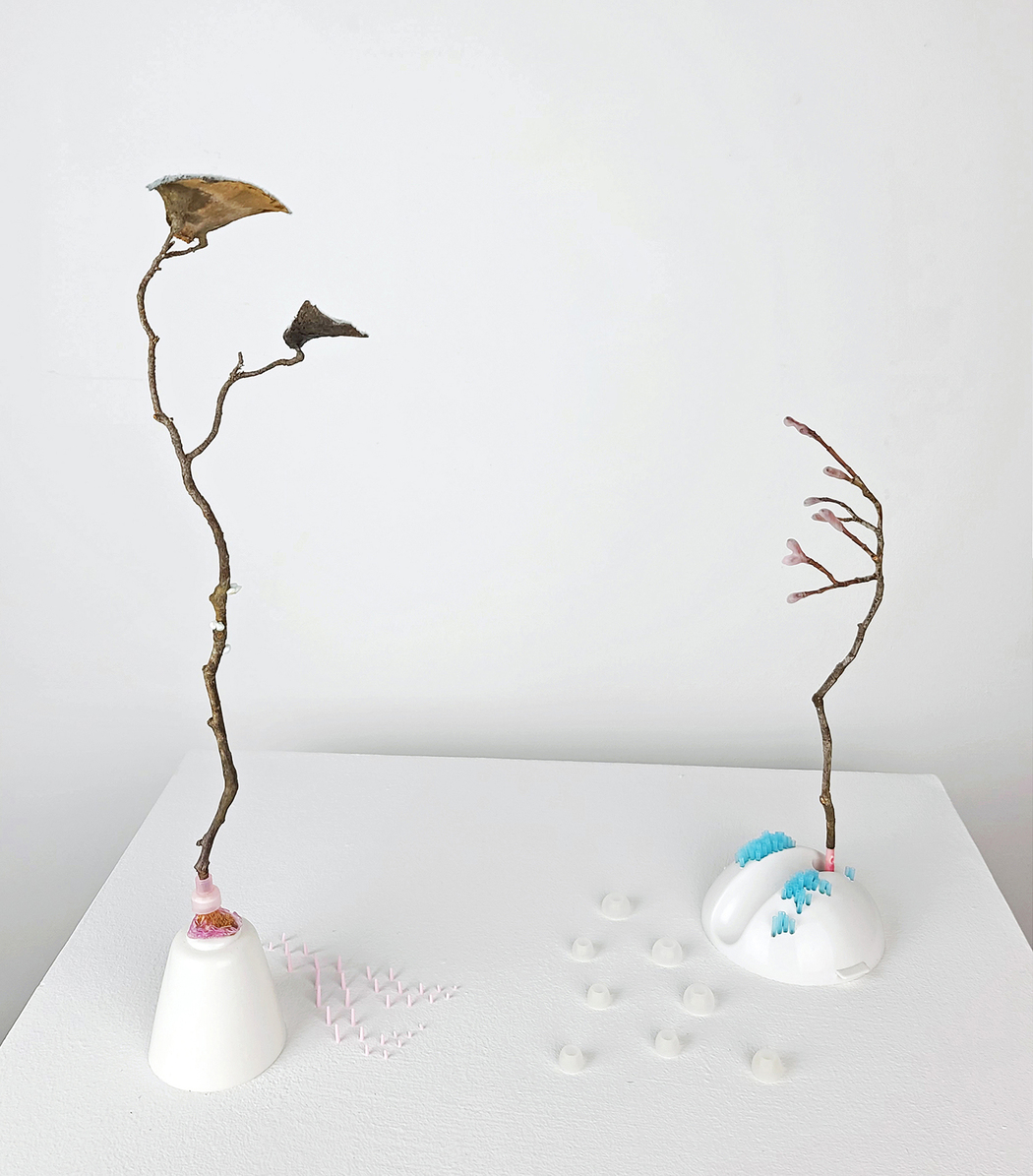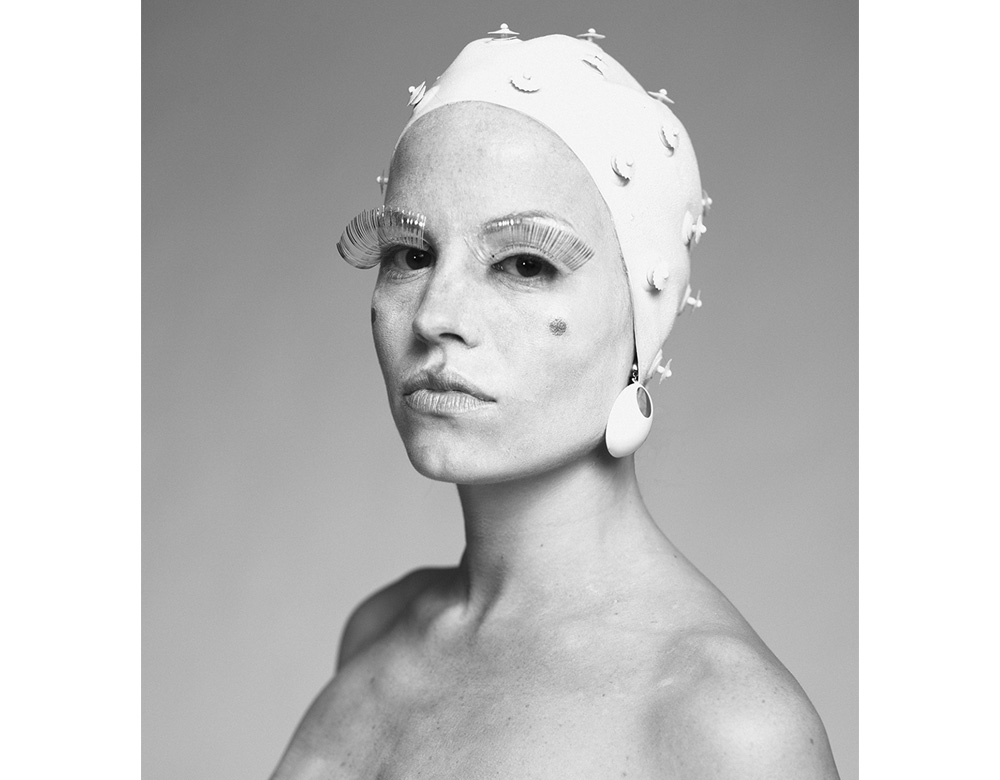Molly Valentine Dierks
Year of birth: 1980.
Where do you live: Boulder, Colorado.
Your education: BA Psychology, Dartmouth College//Post-bac, Sculpture + Extended Media, Virginia Commonwealth University//MFA, Art & Design, University of Michigan.
Describe your art in three words: futuristic seductive poetic.
Your discipline: designed installation, sculpture.
Website | Instagram
Your works often explore the intersections of nature and technology. How did this interest originate, and how do you see these themes evolving in your practice?
I am ambivalent about different technologies, specifically communication technology, and some mass production technologies, which allow us to produce for profit without thinking of the impact. We also have a history of likening the human body to the machine (beginning with Descartes)- I find this an incredibly troublesome analogy that doesn’t make space for cycles of rest, of quietness, just ‘being’ versus ‘doing’. I also feel like phones, while they connect us, can contribute to a larger culture of isolation. Life is messy, there are no answers, so maybe likening ourselves to work machines is comforting. This being said, I rely on fabrication technologies in other areas of my practice, because it gives me a sense of control over the design, which I love, and I talk to my family over facetime etc. So a lot of my work explores this discomfort. Sidebar: I also see a lot of movies about AI and human robot assistants turning againts humanity, so I think this is actually an underlying cultural anxiety… machines becoming more important than the human spirit, or the natural world.
You collect various materials during your walks—mushrooms, debris, etc. How do these objects inspire your creative process, and how do you decide which to incorporate into your pieces?
This originated organically, mostly from a need to be outside. I am always collecting things that I like to look at, that inspire me… basically what I find visually appealing… tiny, delicate, absorbing. I feel like in the United States, we put an emphasis on the new, the flashy, the big, the stand-alone. But in nature, so many of the quiet, tiny things are not only beautiful, they are integral in a larger web of being. So this part of my practice is how I give myself permission to explore more. I did this work in grad school, really just for me, and was hesitant to show it for critique. After the Arteles Residency in Finland, where I was immersed in nature & did not have access to the internet (they even confiscated our phones as part of the residency, which I loved), I got more serious about this work (living in nature) and it became more central.
 Molly Valentine Dierks | Twin Spirits | 2022
Molly Valentine Dierks | Twin Spirits | 2022
Your art combines synthetic and natural elements. How do you select these elements, and what role do they play in conveying your message?
I tend towards things that are tiny and delicate in the natural world… things like mushrooms, really delicate branches. I love how time slows down when we are absorbed in these exquisite things (the curve of a branch, a miniature mushroom, a neat moss culture etc.). The synthetic things I am drawn to (some are bought, some are collected…) generally seem to refer to hospitals, or science, or even body extensions… like test tubes, needles, wax, etc. There is an element of the body in there. My dad was sick when I started the tree work, so I think some of these almost sci-fi appendages we have created to heal people worked themselves into the series. I am also really fascinated with how we ‘fix’ body, our being, in our culture, what we pay attention to (science, machines, pills), and what we don’t emphasize as much (touch, nature).
Your installations focus on transitional states such as vulnerability and evolution. Could you elaborate on how these states are represented in your work, both conceptually and visually?
This refers primarily to my public artwork and installations. As a neurodivergent (ADHD), I am highly motivated by other people, probably also as a human being. Designing large-scale or immersive spaces or installations that are open-ended is my way of carving out a space for people to let go, to just ‘be’, to sit with things that are complex or messy, but also beautiful. To slow down, and acknowledge that life isn’t linear, or solvable, and that growth is a process that is ongoing. It’s important to me as a designer to work with institutions to create these spaces, which I think of as little dream bubbles in someone’s day, where they can slow down and connect with themselves.. to be with more complicated, open-ended feelings – and also a sense of peace.
 Molly Valentine Dierks | Twilight Sleep | 2022
Molly Valentine Dierks | Twilight Sleep | 2022
You’ve participated in residencies in various countries such as China, Japan, Iceland, and Finland. How have these diverse environments influenced your artistic process?
I love traveling and exploring, visual culture, ways of interacting, how things are produced, the natural landscape. Each of these residencies has been eye-opening in some way: for example in Finland (and Iceland), there are very strict rules for how people interact with nature, with ecology (sound laws, clean water, other things like not disturbing moss cultures, they even have free thrift centers where you simply pick up what you need). I am also interested in how different cultures approach design, color palettes, and forms (for example pastel versus primary colors in Korea). Even the religious underpinnings- Buddhist, versus Puritan – works itself into how people approach art-making. I like getting away from the United States, especially as an artist-designer, because there is an emphasis on different forms, and shapes. I particularly love the lack of emphasis asymmetrical ‘balance’ in design in Japan and Korea (ukiyo-e prints, ikebana).
How does your background in social psychology and your love for fiction and poetry influence the way you approach your art?
I am fascinated by people. The only drawback I have found to being an artist or designer is that it can get lonely. I combat this, not just with being an educator and mentor, (which I adore)…but with studying people, through movies, through fiction, through poetry. I particularly love how people approach fantasy. I think it’s telling… like what is popping up in our movies? How does that reflect a kind of cultural wistfulness or anxiety? What are we worried about, hopeful for? My work is a kind of fantasy too, a story without a conclusion.
 Molly Valentine Dierks | Eva and Sophie | 2022
Molly Valentine Dierks | Eva and Sophie | 2022
You’ve exhibited internationally. How has audience response to your work varied across different cultures?
I haven’t honestly found a great deal of difference in the way that people respond to my work across cultures. My goal is always to create a draw, something so visually visceral and hopefully appealing, that it does not need to be explained in words, it is okay to just feel, and to look. I think across cultures, we all need space and time to turn off our desire to explain, or have an answer, or even a ‘point’, and just be… feel things that are complex, open-ended, without answers. We are super uncomfortable with that, it seems, so I use my skills as a designer to create a space of comfort around it.


Leave a Reply
You must be logged in to post a comment.